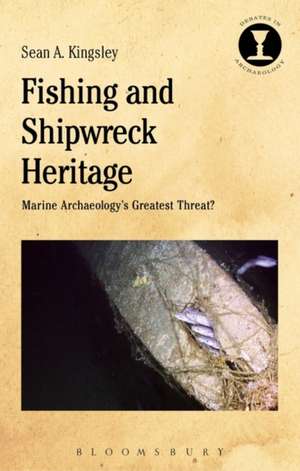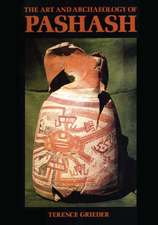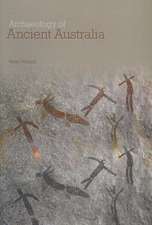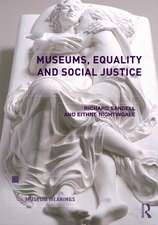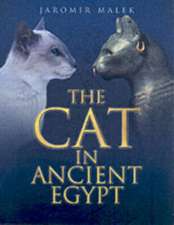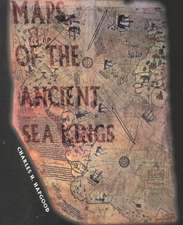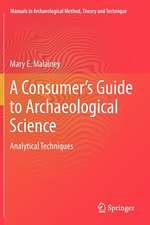Fishing and Shipwreck Heritage: Marine Archaeology's Greatest Threat?: Debates in Archaeology
Autor Dr Sean A. Kingsleyen Limba Engleză Paperback – 17 mai 2017
| Toate formatele și edițiile | Preț | Express |
|---|---|---|
| Paperback (1) | 247.70 lei 6-8 săpt. | |
| Bloomsbury Publishing – 17 mai 2017 | 247.70 lei 6-8 săpt. | |
| Hardback (1) | 536.80 lei 6-8 săpt. | |
| Bloomsbury Publishing – 18 noi 2015 | 536.80 lei 6-8 săpt. |
Din seria Debates in Archaeology
- 24%
 Preț: 170.07 lei
Preț: 170.07 lei - 24%
 Preț: 170.50 lei
Preț: 170.50 lei - 28%
 Preț: 466.81 lei
Preț: 466.81 lei - 14%
 Preț: 164.50 lei
Preț: 164.50 lei - 17%
 Preț: 171.76 lei
Preț: 171.76 lei - 17%
 Preț: 169.62 lei
Preț: 169.62 lei - 13%
 Preț: 248.61 lei
Preț: 248.61 lei - 18%
 Preț: 169.08 lei
Preț: 169.08 lei - 14%
 Preț: 163.42 lei
Preț: 163.42 lei - 30%
 Preț: 566.67 lei
Preț: 566.67 lei - 22%
 Preț: 594.35 lei
Preț: 594.35 lei - 24%
 Preț: 169.27 lei
Preț: 169.27 lei - 14%
 Preț: 169.27 lei
Preț: 169.27 lei - 24%
 Preț: 169.62 lei
Preț: 169.62 lei - 14%
 Preț: 170.69 lei
Preț: 170.69 lei - 13%
 Preț: 247.98 lei
Preț: 247.98 lei - 24%
 Preț: 168.74 lei
Preț: 168.74 lei - 24%
 Preț: 169.62 lei
Preț: 169.62 lei - 14%
 Preț: 169.79 lei
Preț: 169.79 lei - 14%
 Preț: 247.22 lei
Preț: 247.22 lei - 18%
 Preț: 253.64 lei
Preț: 253.64 lei - 18%
 Preț: 169.44 lei
Preț: 169.44 lei - 14%
 Preț: 178.22 lei
Preț: 178.22 lei - 13%
 Preț: 247.98 lei
Preț: 247.98 lei - 17%
 Preț: 170.32 lei
Preț: 170.32 lei - 17%
 Preț: 170.07 lei
Preț: 170.07 lei - 17%
 Preț: 169.71 lei
Preț: 169.71 lei - 13%
 Preț: 149.87 lei
Preț: 149.87 lei - 14%
 Preț: 162.79 lei
Preț: 162.79 lei - 24%
 Preț: 169.71 lei
Preț: 169.71 lei - 14%
 Preț: 169.88 lei
Preț: 169.88 lei - 24%
 Preț: 170.07 lei
Preț: 170.07 lei - 24%
 Preț: 170.07 lei
Preț: 170.07 lei -
 Preț: 169.62 lei
Preț: 169.62 lei - 14%
 Preț: 169.62 lei
Preț: 169.62 lei - 14%
 Preț: 169.88 lei
Preț: 169.88 lei - 13%
 Preț: 149.87 lei
Preț: 149.87 lei - 30%
 Preț: 567.99 lei
Preț: 567.99 lei - 14%
 Preț: 170.32 lei
Preț: 170.32 lei - 23%
 Preț: 248.17 lei
Preț: 248.17 lei - 17%
 Preț: 169.71 lei
Preț: 169.71 lei - 30%
 Preț: 537.55 lei
Preț: 537.55 lei - 18%
 Preț: 169.27 lei
Preț: 169.27 lei
Preț: 247.70 lei
Preț vechi: 286.17 lei
-13% Nou
Puncte Express: 372
Preț estimativ în valută:
47.40€ • 49.62$ • 39.22£
47.40€ • 49.62$ • 39.22£
Carte tipărită la comandă
Livrare economică 05-19 aprilie
Preluare comenzi: 021 569.72.76
Specificații
ISBN-13: 9781350037069
ISBN-10: 1350037060
Pagini: 176
Ilustrații: 16 bw illus
Dimensiuni: 216 x 142 x 15 mm
Greutate: 0.2 kg
Ediția:NIPPOD
Editura: Bloomsbury Publishing
Colecția Bloomsbury Academic
Seria Debates in Archaeology
Locul publicării:London, United Kingdom
ISBN-10: 1350037060
Pagini: 176
Ilustrații: 16 bw illus
Dimensiuni: 216 x 142 x 15 mm
Greutate: 0.2 kg
Ediția:NIPPOD
Editura: Bloomsbury Publishing
Colecția Bloomsbury Academic
Seria Debates in Archaeology
Locul publicării:London, United Kingdom
Caracteristici
The first study to examine one of marine archaeology's most controversial and hotly debated contemporary topics
Notă biografică
Dr Sean Kingsley is a marine archaeologist and the Director of Wreck Watch Int., a London-based consultancy specializing in threats to global maritime heritage. He has written eleven books on deep-sea wrecks, ancient trade, economics, and Byzantine seafaring.
Cuprins
List of IllustrationsPrefaceAcknowledgements1. Wrecks and Time Capsules2. Trawling the Data3. Bulldozers of the Deep4. Scales of Heritage Impacts5. Management Myopia6. Conclusion: Seeking SustainabilityNotesBibliographyIndex
Recenzii
Kingsley, an experienced marine archaeologist, director of Wreck Watch International, and frequent consultant for commercial and non-profit marine archaeological organizations, has a record of defending commercial and academic underwater archaeological activity against what he considers an excessive concern with in situ preservation . This book will educate readers about this threat to our marine cultural heritage and encourage them to advocate proper protections.
Shipwrecks are widely regarded by archaeologists as invaluable "time capsules," preserving otherwise unobtainable data on aspects of the human past. In Fishing and Shipwreck Heritage, Sean Kingsley documents how the modern commercial fishing industry is ripping these precious capsules apart, spreading their contents far and wide and exposing them to total destruction. He also documents a conspiracy of silence among industries, governments, heritage authorities and nautical archaeologists themselves, allowing us to turn a blind eye to the destruction. Fishing and Shipwreck Heritage is a call to action that must not be ignored.
A well-considered and thorough piece of research on a problem that is hidden from sight (and the minds) of the majority of people. It provides a compelling argument for an urgent consideration of the effects of fishing upon our underwater cultural heritage, and will be of interest to those working in the fields of archaeology, maritime heritage and the marine environment.
The author has had the courage to face the question of the dramatic impact of fishing on the ancient shipwrecks, analytically arguing the quality and the quantity of a phenomenon which is much more devastating than any other form of impact on this cultural resource. The book should touch the consciences of the institutions which can no more ignore one of the more neglected and troublesome problems of the management of the archaeological heritage.
We wouldn't plough up Nineveh or bulldoze Hadrian's Wall, but unwittingly we have left extraordinary marine archaeological treasures to the mercy of trawl net and dredge. This vitally important book makes a compelling and richly detailed case for their urgent protection.
Shipwrecks are widely regarded by archaeologists as invaluable "time capsules," preserving otherwise unobtainable data on aspects of the human past. In Fishing and Shipwreck Heritage, Sean Kingsley documents how the modern commercial fishing industry is ripping these precious capsules apart, spreading their contents far and wide and exposing them to total destruction. He also documents a conspiracy of silence among industries, governments, heritage authorities and nautical archaeologists themselves, allowing us to turn a blind eye to the destruction. Fishing and Shipwreck Heritage is a call to action that must not be ignored.
A well-considered and thorough piece of research on a problem that is hidden from sight (and the minds) of the majority of people. It provides a compelling argument for an urgent consideration of the effects of fishing upon our underwater cultural heritage, and will be of interest to those working in the fields of archaeology, maritime heritage and the marine environment.
The author has had the courage to face the question of the dramatic impact of fishing on the ancient shipwrecks, analytically arguing the quality and the quantity of a phenomenon which is much more devastating than any other form of impact on this cultural resource. The book should touch the consciences of the institutions which can no more ignore one of the more neglected and troublesome problems of the management of the archaeological heritage.
We wouldn't plough up Nineveh or bulldoze Hadrian's Wall, but unwittingly we have left extraordinary marine archaeological treasures to the mercy of trawl net and dredge. This vitally important book makes a compelling and richly detailed case for their urgent protection.
